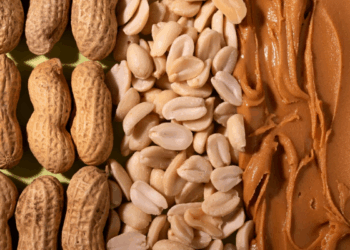During your nine months of pregnancy, you pretty much got your “new” healthy-eating for two diet down to a science. However, now that baby has arrived and you have decided to breastfeed, should you follow your previous meal plan or is there a better way to eat that is geared towards your new normal?
Well, if you followed a healthy pregnancy diet, a breastfeeding diet is not much different; however, there are somethings that you might want to make sure that that you are including daily to ensure that you are getting the nutrients that both you and baby need.
According to the experts, in an article written for whattoexpect.com, this is a basic beginning breastfeeding guide:
Fluid intake: about 128 ounces from all sources, not just water (a good rule of thumb, drink a glass of water during each nursing session)
Protein: 3 servings
Calcium: 5 servings (or between 1,000 and 1,500 mg — especially important since breastfeeding draws from your calcium reserves)
Iron-rich foods: 1 or more servings
Vitamin C: 2 servings
Leafy green and yellow vegetables/fruits: 3 to 4 servings
Other fruits and veggies: 1 or more servings
Whole grains and complex carbohydrates: 3 or more servings
High-fat foods: Small amounts (you don’t need as much as you did during pregnancy)
Omega 3s: 2 to 3 servings a week to promote baby’s brain growth (that’s at least 8 ounces a week of low-mercury fish like wild salmon and sardines; you can also get omega 3s in DHA-enriched eggs)
Prenatal vitamin: Daily
Additionally, here are four tips to just make sure that you and baby get off to a great start.
1. Eat plenty of fruits and veges: Fruits and veges are the foundation of any diet. Adding at least three servings of fruits and veges a day help to provide necessary vitamins and are imperative for milk productions. And of course, they add plenty of fiber to your diet. Green leafy veges provide nutrients that other foods cannot. So chow down on all of the spinach, broccoli, kale, and asparagus without any guilt.
2. A small serving of protein go a long way: Lean protein provides amino acids that our bodies cannot manufacture on its own. For breastfeeding, lean proteins such as chicken, fish, eggs, milk, yogurt, cheese, quinoa, and soy should be included in at least three servings a day, but make sure to keep it according to serving guidelines because exceeding the recommended daily servings could result in storage of extra body fat.
3. Whole grain is a blessing at every meal: Whole grains, such as brown rice and oatmeal, are lower in calorie and carb counts than fruits and veges. Whole grains help to increase milk production.
4. Include healthy fats: Walnuts, almonds, and avocados provide Vitamin E, Omega 3, Omega 6, and antioxidants to both mom and baby. Don’t over indulge because the downside, these healthy fats can induce gas, bloating, water retention, and stomach discomfort.
Breastfeeding will be challenging, but hang in there. Before you know if, you and baby both will enjoy the quality time. Remember, you are exposing your baby to many different flavors and foods. So, do your research, know what to stay away from, watch out for allergic reactions. But in the end, be confident that you are giving your little one a great healthy start.







